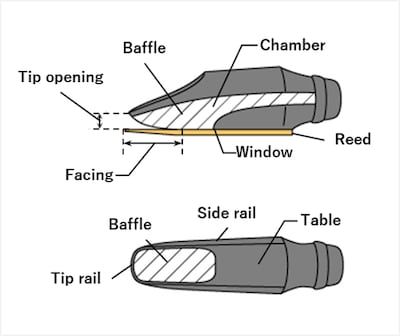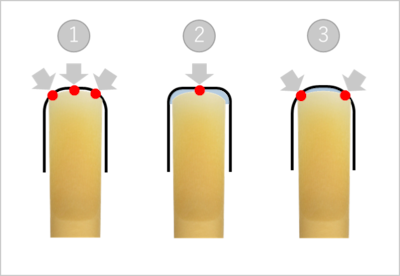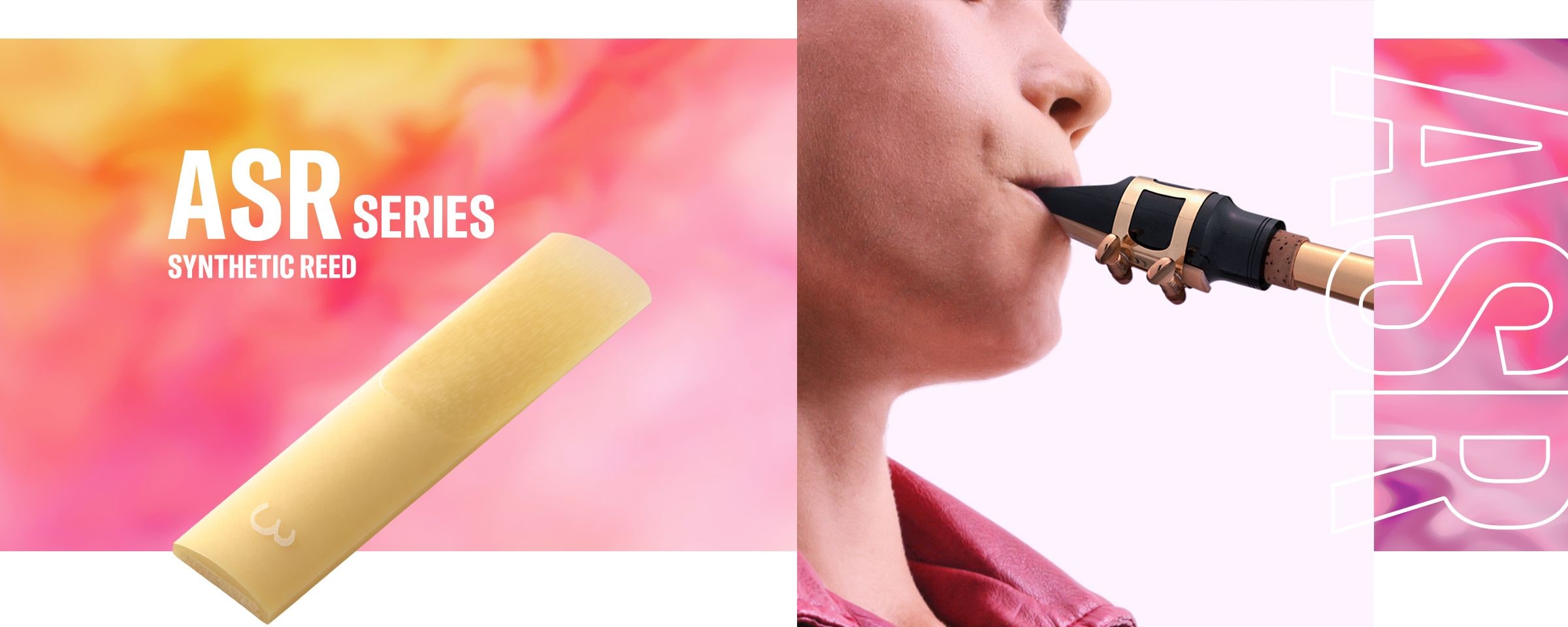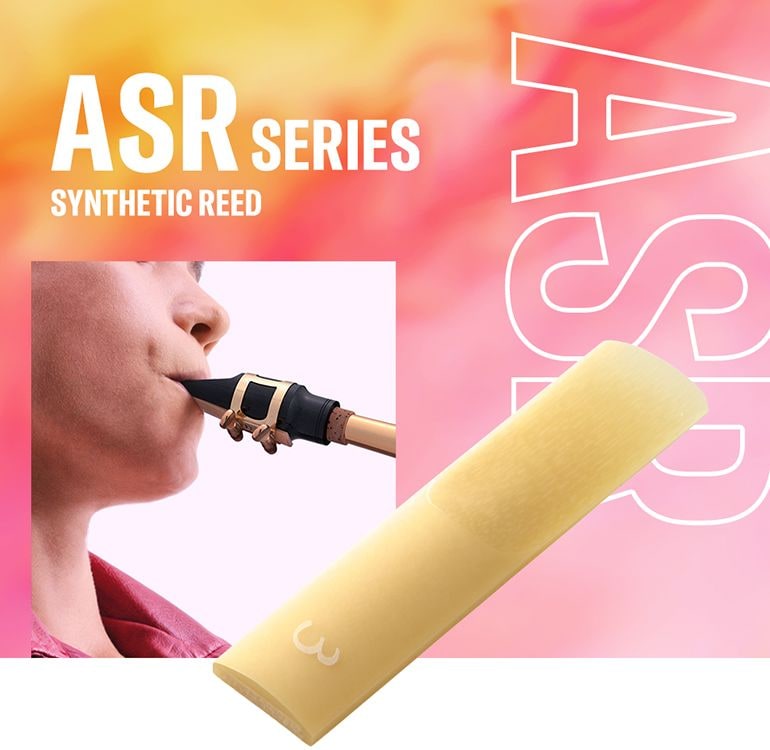Série ASR Anches synthétiques pour saxophone alto
Conseils pour trouver un roseau synthétique de bonne résistance
Les forces des anches synthétiques Yamaha correspondent étroitement à celles des anches de canne conventionnelles. Nous vous recommandons donc de choisir d'abord une force identique ou similaire à celle que vous utilisez actuellement.
Trouver la force optimale de l'anche synthétique :
Réglez la résistance en déplaçant l'anche légèrement plus haut ou plus bas sur l'embouchure. Plus l'anche est haute, plus la résistance est élevée, plus elle est basse.
Outre le positionnement de l'anche, vous pouvez généralement trouver une indication dans les caractéristiques de l'embouchure que vous utilisez. En général, l'embouchure se compose de parties telles que la "chicane", la "chambre", la "face", l'"ouverture de l'embouchure", etc (voir l'image au bas de cet article).
On dit que le "Facing" et le "Tip Opening" influencent particulièrement le son et la jouabilité. Le "Facing" correspond à la longueur de l'anche qui vibre en soufflant. La partie inférieure de l'anche est en contact avec la "table" de l'embouchure. C'est pourquoi seule la partie de l'anche correspondant au "Facing" de l'embouchure vibre. Plus la longueur de l'anche est grande, plus la résistance et le son produit sont importants. Plus elle est courte, moins elle a de résistance.
L'ouverture de l'anche est la distance entre la pointe de l'anche et l'embouchure. Plus cette distance est grande, plus la résistance et le son produit sont importants, et inversement.
En règle générale, pour l'embouchure qui a une face plus courte et une ouverture de pointe plus petite, une anche plus résistante conviendra. Pour l'embouchure qui a une face plus longue et une ouverture de pointe plus grande, une anche moins résistante conviendra.
Le bec Yamaha 4C a une face relativement courte et une ouverture de pointe plus petite, ce qui permet aux débutants de produire des sons plus facilement. Par conséquent, les becs 3 ou 3 1/2 conviennent à la plupart des musiciens.
Si vous ne connaissez pas les détails de l'embouchure que vous utilisez, veuillez contacter le magasin où vous l'avez achetée. La façon dont vous jouez ou l'état de l'instrument peuvent également être des facteurs influents, c'est pourquoi il est recommandé d'essayer l'anche avant de l'acheter.

La forme de la pointe de l'embouchure et l'anche ne sont pas les mêmes. Comment l'ajuster ?
Appliquez d'abord l'anche sur la partie inférieure de l'embouchure, puis remontez progressivement jusqu'à la pointe de l'embouchure. Si la forme de l'anche et celle de l'embouchure sont identiques, elles s'emboîtent. Dans le cas contraire, la position de l'anche est basée sur le point où la pointe de l'anche et l'embouchure se rapprochent le plus.
1) La forme de l'embouchure et celle de l'anche sont identiques : régler l'anche en fonction de la forme de l'embouchure.
2) La courbe de la pointe de l'embouchure est douce et les côtés droit et gauche ont un vide : ajuster la pointe de l'anche à la pointe de l'embouchure.
3) La courbe de la pointe de l'embouchure est aiguë et la pointe présente un vide : ajuster les pointes gauche et droite de l'anche à l'embouchure.

Quelle est la différence entre l'anche synthétique Yamaha et l'anche attachée à Venova ?
Les anches synthétiques Yamaha ont été développées récemment. Les anches synthétiques Yamaha adoptent une nouvelle formulation de matériau fibreux. De plus, le traitement thermique améliore la production et la tonalité du son. De plus, le numéro gravé au laser ajoute une différence d'aspect. Vous pouvez utiliser la série ASR pour le YVS-120 et la série TSR pour le YVS-140.






